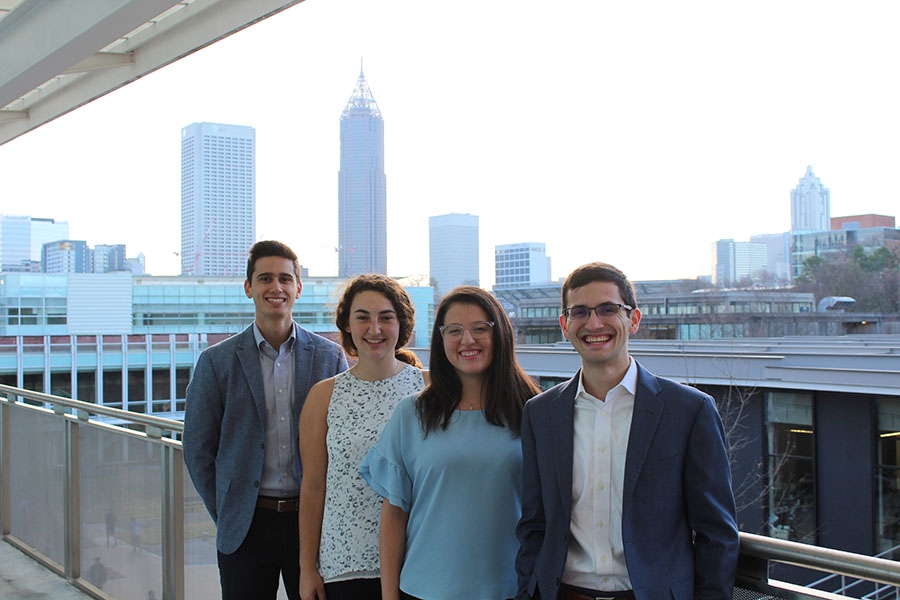
 |
| River Recon is comprised of environmental engineering students Matthew Falcone, Erin Kowalsky, and Kaylyn Sinisgalli along with mechanical engineering student Timothy Purvis. |
Covid-19 forced the academic year to be completed remotely, but it didn’t stop hardworking students from showcasing their impressive senior design projects. The spring 2020 design teams gave their presentations virtually in lieu of the Capstone Design Expo that typically marks the end of the semester for graduating seniors.
CEE faculty and industry sponsors watched online and selected a winning student team to represent the School of Civil and Environmental Engineering. The Capstone Award for best CEE team went to River Recon, a multidisciplinary group that designed a device to detect microplastics in water.
“This was a great team from beginning to end,” said Environmental Engineering Professor of the Practice John Koon. “They dealt with the disruption and confusion of the pandemic and still completed the project on schedule.”
River Recon is comprised of environmental engineering students Matthew Falcone, Erin Kowalsky, and Kaylyn Sinisgalli along with mechanical engineering student Timothy Purvis.
The team was advised by Koon and Amit Jariwala from the School of Mechanical Engineering, who worked together to ensure that the project met both mechanical and environmental engineering requirements. Robert Wallace of the Georgia Tech Research Institute served as the project’s sponsor.
The team set out to create their detection device because there are currently no effective methods for quantifying microplastics in water—making it difficult to understand the full extent of this emerging environmental contaminant. Plastic waste breaks up into microscopic pieces that are not visible to the human eye. These tiny pieces—at less than 5 millimeters along their longest dimension— cause harm to our health and the environment.
“We environmental engineers (and others) are working now to figure out how many of these microplastic pieces are in the environment, especially in our water,” Koon said. “Once we begin to figure out how much there is in the water, we will want to know if these microplastics are removed in our water treatment processes, and if they are not, how we can modify water treatment so that they will be removed.”
River Recon’s portable device was designed to test water from continuous streams of water, like rivers, using fluorescence to identify the microplastics. The team is now planning to file a provisional patent for this technology over the summer.
“Working on our team was truly a great experience,” said environmental engineering student Matt Falcone. “I think the collective passion of our group is what enabled us to work through design challenges, as we saw the broader impacts that such technology could have. The opportunity to work on a topic that continues to be of increasing global interest was truly a rewarding experience.”
Related Links:
- CEE Teams Impress at Capstone Design Expo
- Capstone Design Expo
- He Vanquished Water Pollutants After a River Burned 13 Times
